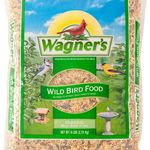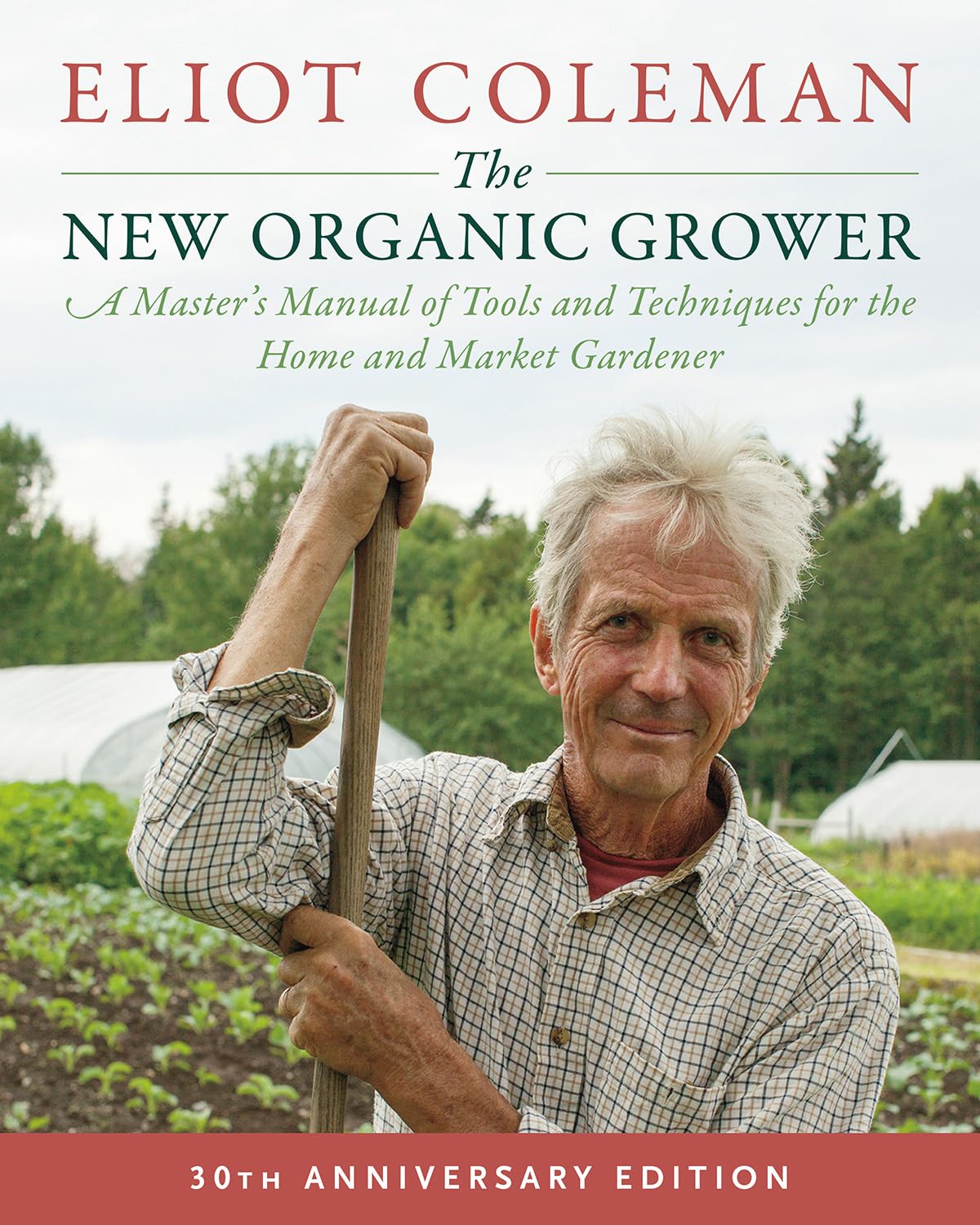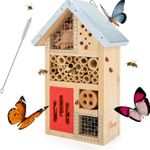Extraordinary scenes from SU’s 2024 garden

Hi GPODers, Happy New Year!
We’re starting the new year with a bang and taking in 2024’s most stunning scene from Sue Webel’s garden. A favorite foliage plant, and the highlight of Sue’s 2021 garden), the growth of her garden since it was first submitted in 2020 has been astounding. Supporting comments on many GPOD posts under the name-matching Instagram handle @musabasjoosue), so be sure to consider showing Sue some love in the comments below!
My garden is located over 800 feet above sea level in North Canton, Connecticut (Zone 6a). GPOD has published photos of the garden on several occasions, most recently in February. I take hundreds of photos every garden season, many of which are posted on my Instagram account @musabasjoosue. In this submission, I’ve chosen a selection of photos spanning the entire season of 2024 that have made a lasting impression on me. The image resolution is very high, so I had to send the image in three emails.
As in previous years, the 2024 garden season presents a unique set of challenges. We had a lot of rain in 2023, giving most plants an advantage heading into 2024. squirt. Time will tell whether my efforts are too little, too late. Regardless, I will be back at work in 2025 as a recently retired gardener. I’m already dreaming of what I can do with all this extra time!
I love this happy early May Slava Triumph tulip composition (tulip “Slawa”, zones 3-8) and golden japanese forest grass (box golden flower “Halo”, zones 5-9).
 In order for Siberian irises to earn their place here, they must have unique flowers. charming billy (siberian iris “Charming Billy”, zones 3-9) Meet the requirements.
In order for Siberian irises to earn their place here, they must have unique flowers. charming billy (siberian iris “Charming Billy”, zones 3-9) Meet the requirements.
 Unlike my previous garden, shade here is in short supply. Most (and a few) of my hostas are growing in a north-facing bed at the front of the house. Recommended here is Guardian Angel (Hosta x “Guardian Angel”, areas 3-9). Love the blue patterned leaves!
Unlike my previous garden, shade here is in short supply. Most (and a few) of my hostas are growing in a north-facing bed at the front of the house. Recommended here is Guardian Angel (Hosta x “Guardian Angel”, areas 3-9). Love the blue patterned leaves!
 Discover the Treasure Bearded Iris (German Iris’“Discovering Treasures”, areas 3–9) is Schreiner’s bonus plant. How beautiful!
Discover the Treasure Bearded Iris (German Iris’“Discovering Treasures”, areas 3–9) is Schreiner’s bonus plant. How beautiful!
 For years I lamented my inability to get digitalis to reseed. Then they exploded. In the spring, I dig up the seedlings and move them to the garden. If I sow too much, I pull out the excess and compost it. I rely on their repetition to weave the garden together.
For years I lamented my inability to get digitalis to reseed. Then they exploded. In the spring, I dig up the seedlings and move them to the garden. If I sow too much, I pull out the excess and compost it. I rely on their repetition to weave the garden together.
 After years of croaking daylilies, I now grow close to 100 different varieties…hahaha…never say never. I focus on late blooming varieties and use them in vignettes with other non-daylily plants. Tianliangbing (Hemerocallis “Heavenly Angel Ice”, zones 2-8) Always a great companion to the Pinky Pollen Ring Smooth Hydrangea (Hydrangea arborescens’Pink pollen ring’, zones 3-8).
After years of croaking daylilies, I now grow close to 100 different varieties…hahaha…never say never. I focus on late blooming varieties and use them in vignettes with other non-daylily plants. Tianliangbing (Hemerocallis “Heavenly Angel Ice”, zones 2-8) Always a great companion to the Pinky Pollen Ring Smooth Hydrangea (Hydrangea arborescens’Pink pollen ring’, zones 3-8).
 Oh Conca d’Or Lily (Lily “Conca d’Or”, arrondissements 4-8), I had to rush to take these photos as the flowers only lasted a few days during the July heat wave. Good luck next year.
Oh Conca d’Or Lily (Lily “Conca d’Or”, arrondissements 4-8), I had to rush to take these photos as the flowers only lasted a few days during the July heat wave. Good luck next year.
 Mighty Chestnut Daylily (Hemerocallis “Mighty Chestnut”, Zones 3-9) In the abundance of mid-July.
Mighty Chestnut Daylily (Hemerocallis “Mighty Chestnut”, Zones 3-9) In the abundance of mid-July.
 If you are looking for a relatively compact panicle hydrangea, I highly recommend the Fire Light Tidbit® (hydrangeas “SMNHPK”, regions 3-8). Deer ‘pruned’ Gianna phlox (Phlox “Jeana”, zones 4-8) This helps keep things more compact earlier in the season.
If you are looking for a relatively compact panicle hydrangea, I highly recommend the Fire Light Tidbit® (hydrangeas “SMNHPK”, regions 3-8). Deer ‘pruned’ Gianna phlox (Phlox “Jeana”, zones 4-8) This helps keep things more compact earlier in the season.
 In mid-September, under a large oak tree in the back garden. The drought has affected some of the plants growing here, but not all. ‘Gibraltar’ shrub clover (Lespedeza “Gibraltar”, zones 4-8) Is a great late season plant, but does it get huge! The beautiful summer carnival hibiscus flower (Hibiscus “Summer Carnival”, zones 4-9) Added bold foliage for a pop of contrast. The grass is small zebra miscanthus (Miscanthus “Baby Zebra”, zones 5-9). Coral Cream Drops Phlox (Phlox “Ditomdere”, zones 3-9) Make the vignette more rounded.
In mid-September, under a large oak tree in the back garden. The drought has affected some of the plants growing here, but not all. ‘Gibraltar’ shrub clover (Lespedeza “Gibraltar”, zones 4-8) Is a great late season plant, but does it get huge! The beautiful summer carnival hibiscus flower (Hibiscus “Summer Carnival”, zones 4-9) Added bold foliage for a pop of contrast. The grass is small zebra miscanthus (Miscanthus “Baby Zebra”, zones 5-9). Coral Cream Drops Phlox (Phlox “Ditomdere”, zones 3-9) Make the vignette more rounded.
 View of my terrace garden from the back lawn in late September. The four ginseng plants in the upper right corner are very hardy here. I love bold tropical foliage and this fits the bill. Summer Ice Daphne in the foreground (daphne x transatlantica “Summer Ice and Snow, Zones 5–9) Flowers almost year round. Other plants are lace elderberry (black elderberry “SNR1292”, zones 4–7) (left) and Japanese bloodweed (Imperata “Rubra”, zones 5-9) It’s apparently invasive in some climates, but almost impossible to survive here.
View of my terrace garden from the back lawn in late September. The four ginseng plants in the upper right corner are very hardy here. I love bold tropical foliage and this fits the bill. Summer Ice Daphne in the foreground (daphne x transatlantica “Summer Ice and Snow, Zones 5–9) Flowers almost year round. Other plants are lace elderberry (black elderberry “SNR1292”, zones 4–7) (left) and Japanese bloodweed (Imperata “Rubra”, zones 5-9) It’s apparently invasive in some climates, but almost impossible to survive here.
 October frost marks the end of container season. The recent killer frost seemed to come too late and later extended some of my container plants into November.
October frost marks the end of container season. The recent killer frost seemed to come too late and later extended some of my container plants into November.
 Julia Child™ Rose (Rosa “WEKvossutono”, zones 5-10) Just one of two roses I grew. I took this photo just before the first hard freeze on November 26th. Now the gardens are asleep, giving people time to dream and plan for next year.
Julia Child™ Rose (Rosa “WEKvossutono”, zones 5-10) Just one of two roses I grew. I took this photo just before the first hard freeze on November 26th. Now the gardens are asleep, giving people time to dream and plan for next year.
Thank you so much for sharing this wonderful garden update with us, Sue! It’s incredible to see what you’ve accomplished in a short period of time, and it’s clear with every new glance that your garden is getting better and better with age.
Do you have a garden you’d like to share?
Have a photo to share? We’d love to visit your garden, a specific plant collection you like, or a wonderful garden you have the opportunity to visit!
To submit, please send 5-10 photos to [email protected] and some information about the plants in the photo and the location where the photo was taken. We’d love to hear about where you are, how long you’ve been gardening, successes you’re proud of, lessons you’ve learned from them, hopes for the future, favorite plants or interesting stories from your garden.
Do you have a mobile phone? Tag your photos on Facebook, Instagram or twitter With #FineGardening!
Have you received GPOD via email? Register here.
Recommended products for fine gardening

Wagner’s 52003 Classic Game Bird Food Mix, 6 lb. Bag
Fine Gardening earns a commission from purchases made through links on this site, including Amazon Associates and other affiliate advertising programs.
Classic Wild Bird Food uses the highest quality grains to attract wild birds in your backyard. A premium blend of millet, milo, cracked corn and sunflower that can be enjoyed by a variety of wild birds. Ideal for tube, hopper or platform feeders. Perfect for all seasons! Ideal for winter when seeds are scarce; for juveniles in spring and summer; and for migratory birds in autumn to provide energy. This seed will help fill your yard with birds such as jays, cardinals, doves, juncos, finches, geese and more.

The New Organic Grower, Third Edition: A Master’s Manual of Tools and Techniques for Home and Market Gardeners, 30th Anniversary Edition
Fine Gardening earns a commission from purchases made through links on this site, including Amazon Associates and other affiliate advertising programs.
Since first publication in 1989, new organic grower One of the most important agricultural books, pioneer Eliot Coleman led the organic movement in the United States. Now illustrated and updated, this 30th anniversary edition is a must-have for any agricultural library.

Niteangel natural wooden insect hotel, garden insect house, suitable for ladybugs, lacewings, butterflies, bees, bed bugs
Fine Gardening earns a commission from purchases made through links on this site, including Amazon Associates and other affiliate advertising programs.
Insect nest boxes provide a safe environment for garden creatures to shelter, hibernate and lay eggs, and insect houses also prevent insects from entering your warm rooms. The Insect Hotel makes it easy to discover and observe fascinating creatures. Butterflies, bees and ladybugs can use this product as a habitat. Dry wood and bamboo can be home to many insects, such as ladybugs and lacewings, which feed on aphids and help keep plants free from pests. Insect hotels improve plant growth in your yard by attracting beneficial insects. The iron design on the top prevents the insect house from getting wet from rain. Let the insect house have a longer service life and make the insects more comfortable. If you only have a balcony or yard, a hanging garden shelter is ideal as it provides suitable habitat options in a small area.



